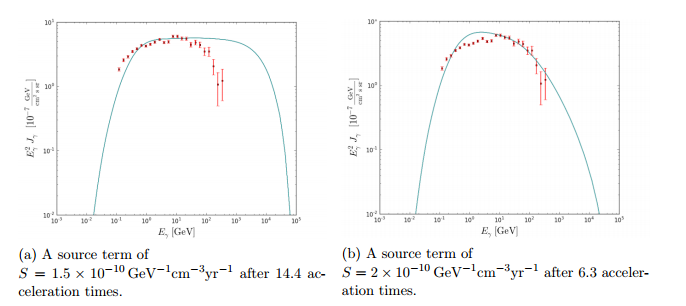 The undergrad research series is where we feature the research that you’re doing. If you’ve missed the previous installments, you can find them under the “Undergraduate Research” category here.
The undergrad research series is where we feature the research that you’re doing. If you’ve missed the previous installments, you can find them under the “Undergraduate Research” category here.
University of California, Santa CruzMegan conducted this research at the Kavli Institute for Particle Astrophysics and Cosmology at Stanford University with the guidance of Dr. Philipp Mertsch. Megan was a SULI (Science Undergraduate Laboratory Internships) intern during the summer of 2015, and she is currently a rising junior.
Modeling High-Energy Gamma-Rays from the Fermi BubblesIn 2010, the Fermi Bubbles were discovered at the galactic center of the Milky Way. These giant gamma-ray structures, extending 55 degrees in galactic latitude and 20-30 degrees in galactic longitude, were not predicted. To develop a model for the gamma-ray emission of the Fermi Bubbles, we assume that second order Fermi acceleration is responsible for the high-energy emission of the bubbles. By solving the steady-state case of the transport equation, I compute the proton spectrum due to second order Fermi acceleration. I compare the analytical solutions of the proton spectrum to a numerical solution. I find that the numerical solution to the transport equation converges to the analytical solution in all cases. The gamma-ray spectrum due to proton-proton interaction is compared to Fermi Bubble data (from Ackermann et al. 2014), and I find that second order Fermi acceleration is a good fit for the gamma-ray spectrum of the Fermi Bubbles at low energies with an injection source term of S = 1.5*10^(-10) GeV^(-1) cm^(-3) yr^(-1). I find that a non-steady-state solution to the gamma-ray spectrum with an injection source term of S = 2*10^(-10) GeV^(-1) cm^(-3) yr^(-1) matches the bubble data at high energies.

Fermi Bubble data (red) plotted with the numerical solution (blue) of the gamma-ray spectrum due to proton-proton interaction. The figure on the left shows that the data matches the numerical solution well for the steady-state case at lower energies; at high energies, the data is a good fit in the non-steady-state case, as seen in the figure on the right.



















